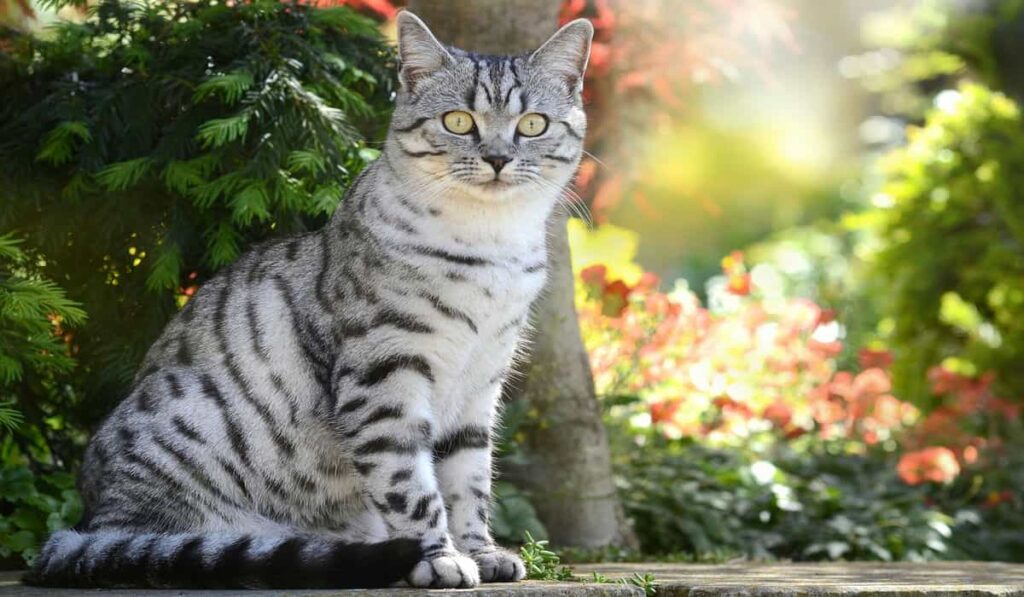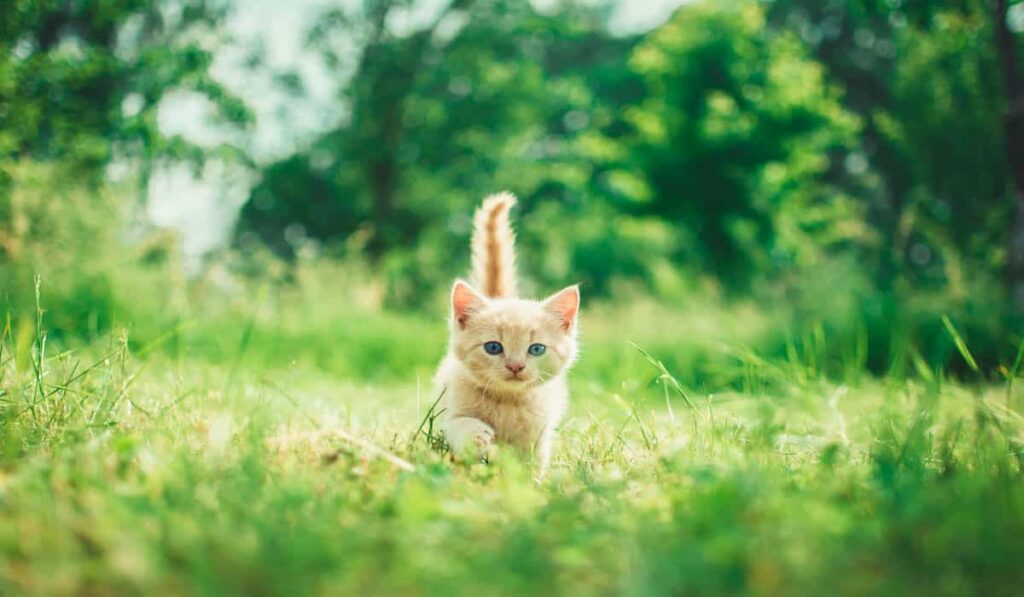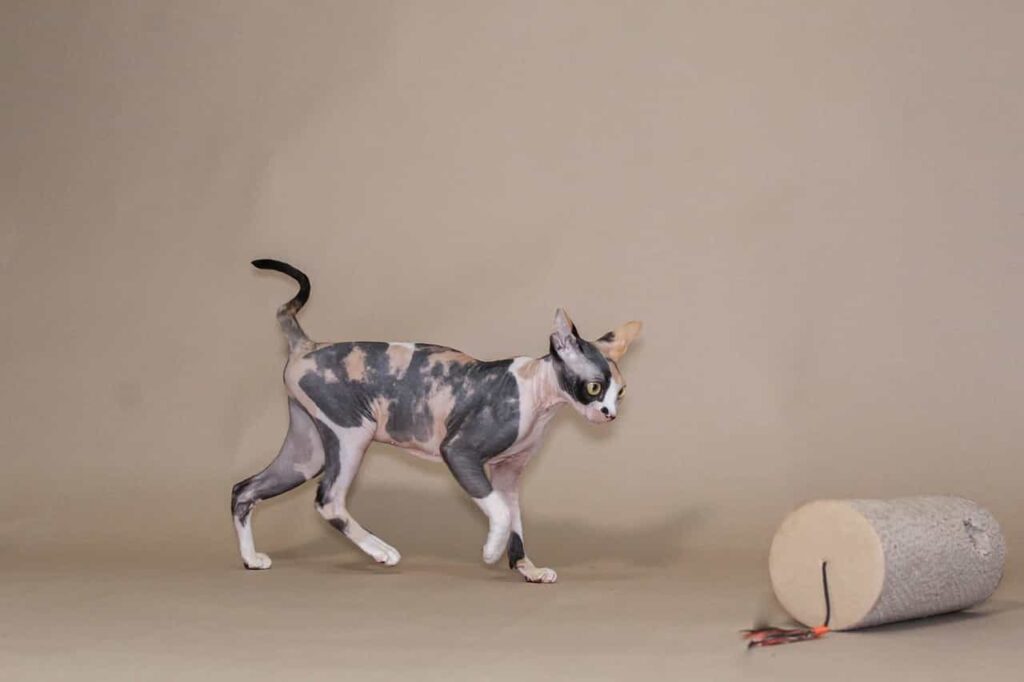Welcome to the enchanting world of Tortoiseshell Cats, a realm where unique fur patterns and captivating personalities blend to create a truly remarkable feline. These multicolored marvels, often known as “torties,” boast a mosaic of colors that mimic the intricate design of a tortoiseshell, making each cat a one-of-a-kind masterpiece. Renowned not just for their striking appearance but also for their distinct ‘tortitude’, Tortoiseshell Cats offer a fascinating blend of charm and mystery.
Whether you’re a seasoned cat enthusiast or a curious newcomer, diving into the life of a Tortoiseshell Cat promises an adventure filled with intriguing facts, from their uncommon lifespan to their rare genetic makeup. Let’s embark on this journey to unravel the secrets of these multi-colored cat breeds, exploring everything from their feline genetics to their specialized care needs.


Table of contents
Tortoiseshell Cat Breed
Tortoiseshell is not a breed- It is specific coat patterns available in many cat breeds. The tortoiseshell cat’s coat pattern is just like the Tortoiseshell. So, they got the name from Tortoise. The main fact is Tortoiseshell cat coats are a mixture of many cat breeds.
That is why the coats look very clumsy. One very significant truth is that tortoiseshell cats are almost female cats, and male cats are seen occasionally but are sterile. Let’s know about the special-looking cats.
Tortoiseshell Cat coat patterns and colors
The fur of Tortoiseshells is divided mostly into 2 categories – Mosaic and Chimera. Mosaic means the traditional pattern. That means mixed colors throughout the body, and Chimera shows a Tortoiseshell- one color on one side of the body and another color on the other as if there are two cats in one body. A straight line divides the body into the same portion.
There are other coat patterns that Tortoiseshell cats have, and the pattern is Torbie. The coat patterns of the Tortoiseshell are Tabby, heavily patched, or lightly spotted. Tortoiseshells can come in colors Cream, White, Blue, Chocolate, Ginger, Fawn, Lilac, Black, Red, and the list goes on and on.
The main difference between a Tortoiseshell and Torbie is- Black is the main color of a Tortoiseshell with lighter Cream or Cinnamon- that is the perfect Tortoiseshell pattern and is called a dilute Tortoiseshell. Some breeds have Tortoiseshell coat patterns- British and American Shorthairs, Persian, Main Coon, Siamese, Japanese Bobtail, and so on.
Why are Tortoiseshell cats mostly female?
Among cats, the Tortoiseshell coat pattern is sex-related and can only be found in females. Males exhibiting the coloration either have extra X Chromosome or are Chimeras means that, besides their DNA, they also carry the DNA of an unborn sister.
Chromosome X can carry the genes either black or Orange color because females have 2 X Chromosome makes it possible for the genes to code the 2 colors in 1. On the other side,, males have 1 X,, and the Y Chromosome can’t code for four colors.
Males can be either Black or Orange, but they can’t be both. The only exception to this rule is the males born with an extra X Chromosome (XXY),; in that case, the male cats have a Tortoiseshell coat pattern. Among 3000 Tortoiseshell cats, only 1 cat can be male, and the matter becomes more sorrowful when you know that all male Tortoiseshell cats are sterile.
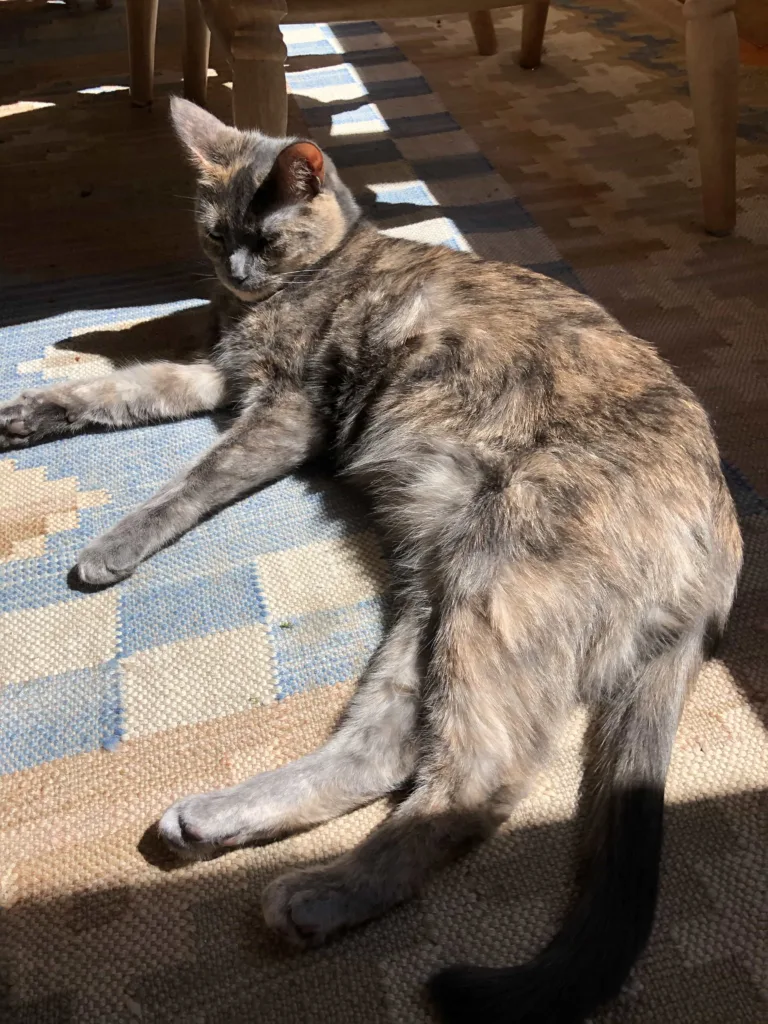

They can’t produce offspring. Besides, male Tortoiseshell cats also suffer from some health issues. They have fragile bones and should be treated more gently than females. Their bones need to be watched to pack their pounds easily.
Ask the veterinarian for dietary supplements and Vitamins to make your boy’s life easier. Besides this, the male Tortie cats don’t have any severe health issues. Female Tortoiseshell cats are more willed, spunky, sassy, and independent than any other cats.
Temperament and nature of Tortoiseshell cats
Tortoiseshell isn’t a specific breed. So, their temperament, nature, and personality depend on which breed they belong to. But one thing is common in all Tobie, and this is called ‘Tortitude.’ they inherit the furballs from their descendants.
So, annoyance, baffling curiosity, and frustration. Besides, they are also clingy, energetic, destructive, and demanding. Many Tortie owners complain that their Torties have a stronger attitude than most other cats. Their coat colors are not responsible for this Tortitude. The breed is responsible for Tortitude.
Tortoiseshell usually lives up to 14 years if it is a purebred, and if it is a result of crossbreeding, their lifespan may be longer. There was a Tortoiseshell in Melbourne, Australia, that lived a surprisingly long life of 21 years, named Marzipan.


care and grooming of Tortoiseshell cat
Again the breed comes in front. Take care of your Tortie according to its breed. Some breeds are high-maintenance, and some are low-maintenance. So, recognize the breed first, take your pet to the vet, and listen to him as they advise you.
Don’t neglect the grooming. If your tortie has a longhaired coat and undercoat,, you must brush it frequently in shedding season. Some breeds require bathing regularly. If your cat is from such a breed, give a bath to your kitty.
Some essentials to increase of your Tortoiseshell cat
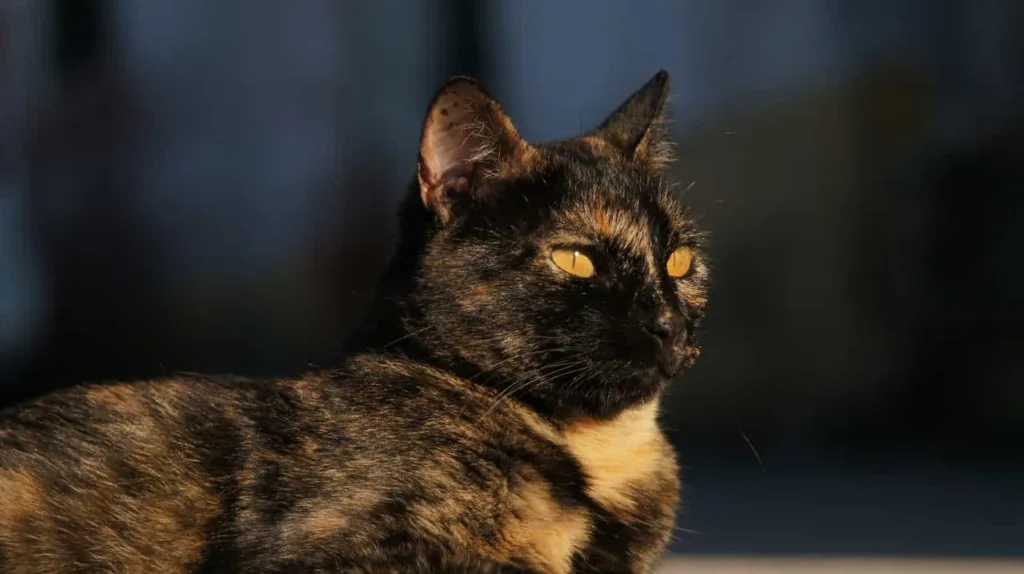

- Specific shampoo for both longhaired and shorthaired kitties because shampoo increases the color brightness of your pet.
- A comfortable cat bed.
- A collar with an ID tag.
- One scratching area so that your kitty can scratch.
- Plenty of interactive toys. Of course, your kitty’s favorite toys.
- For proper exercise, a tall cat tree is a must for every cat breed.
- A cat tent and enclosure if your cat is prone to go outside.
Last but not least, fulfill the demand of your kitties according to their breed.
Taking care of your Tortoiseshell cat health and problems
If your kitty has any breed-related health issues, take it to the vet for proper treatment. There are some common diseases that every breed is prone to. So, take your kitty to the vet after every 6 months for a regular check-up.


Some facts about Tortoiseshell cats
- Tortoiseshell cats have many names- Torbies, tri-colors, and Calicos in the USA and Canada.
- A Tortoiseshell served as a Station master in the Kinawara Rail Station, Japan, in 2007.
- Maine Coon Tortoiseshell cats are the State cats of Maryland, USA.
- Their characteristics and nature have a special name- Tortitude (Tortoiseshell + attitude). As they have problematic behavior so the behavior is named `Tortitude.` Take care of them according to their breed. They have feisty personalities.
- Tortoiseshell cats may be both purebred and mixed-bred. Both can produce Tortoiseshell kittens, both longhaired and shorthaired.
- Their coats can be both brindled and patched. If the colors appear woven together, it is brindled, and if the color appears in a large portion all over the body, it is patched. Tabby patterns are called mosaics.
- There is also a Chimera pattern- two colors equally divide the body called a Chimera pattern.
- If there are 3 colors on the body- White, Black, and Orange- called Calico in North America.
- They can be a good nanny.
- There are some famous Tortoiseshell cats- Caterina (Poet Adger Allan Poe), Marzipan- the resident cat of the Astor Theatre, Tama- The Japanese Station master; Cleo, and Sarah ( The US president Ronald Regan).
- Red and Black dominate the fur coloration of Tortoiseshells. The Red color can be diluted as Gold, Yellow, Cream, and Orange. The Black color can be depicted as Grey, Chocolate, Brown, and Blue.
- When large White patches display with Tortoiseshell coat patterns, it is called Tortoiseshell Point.
- The Tortoiseshell coat pattern is evidence of a Plethora among cat breeds. Plethora also occurs in wild cat breeds.
Myths about Tortoiseshell cat
Some myths are related to Tortoiseshell cats. Such as-
In Japan-
people believe that Tortoiseshell cats save women and children from the Ghost. So, they keep Tortoiseshell in the house.
USA:
Tortoiseshell cats are considered `The Money cat` in the USA. People in the USA believe that if you keep a Tortoiseshell cat in the house, Abundant money will come to you from unexpected sources.
Southeast Asia:
People believed that Tortoiseshell cats were made from the blood of a young Goddess in the ancient period.
United Kingdom:
There is a belief that if you rub a Tortoiseshell cat’s leg, the wart will be healed. Ireland, Scotland, and Germany: The sign of good luck.Japanese sailors kept Tortie cats in their ships as a sign of good fortune and as weather forecasters.
There is a belief that all Tortoiseshell cats are the descendants of a Black cat and hosted the Sun when it came to the world to walk around. If you see a Tortoiseshell cat in your dream, your love life will be successful.
Differences between Calico cat and Tortoiseshell cat
The difference is in the coat-nothing else. The cats have 3 colors in their coats- White, Black, and Orange- called Calico cats in USA and Canada. It is a variation of Tortoiseshell cats.
Tortoiseshell Cat Age and Lifespan
The lifespan of a Tortoiseshell Cat is a tapestry interwoven with genetics and care. These fascinating felines, known for their distinctive “Tortoiseshell Cat genetics,” often enjoy a robust life, spanning anywhere from 12 to 16 years. This longevity is not just a stroke of luck; it’s closely tied to the meticulous “Tortoiseshell Cat care tips” that owners follow. Factors like nutrition, exercise, and regular health check-ups play a pivotal role in extending the “Tortoiseshell Cat lifespan.”
It’s interesting to note that while “Tortoiseshell Cat health issues” might arise, with proper attention and preventive measures, these cats can lead a full, vibrant life. Understanding “Tortoiseshell Cat breeds” can also offer insights into specific health predispositions, allowing owners to tailor their care approach accordingly. This comprehensive care and understanding of their unique needs make the journey of nurturing a Tortoiseshell Cat both rewarding and enriching.
Tortoiseshell Cat Exercise and Training
Exercise and training are crucial for maintaining the vivacious spirit and health of a Tortoiseshell Cat. These agile felines, celebrated for their “Tortoiseshell Cat behavior,” thrive on engaging activities that stimulate both their bodies and minds. Implementing a routine that includes playful interactions can significantly impact their overall well-being. Interestingly, while “Tortoiseshell Cats are rare,” their need for physical and mental stimulation is universal among felines.
Incorporating exercises that align with their unique “Tortie cat characteristics,” such as climbing or chasing, can be highly beneficial. Additionally, training sessions that leverage their “Feline temperament” can enhance their socialization skills, making them well-adapted and happier pets. Thus, a well-planned exercise and training regimen can be instrumental in nurturing a healthy and content Tortoiseshell Cat.
Tortoiseshell Cat Health and Care
Ensuring the health and well-being of a Tortoiseshell Cat involves a holistic approach encompassing regular veterinary check-ups and preventive care. These cats, with their distinctive “Tortoiseshell Cat genetics,” may be predisposed to certain “Tortoiseshell Cat health issues.” It’s imperative to be vigilant about their health, addressing concerns like dental hygiene, vaccinations, and parasite control. Regular health screenings can preemptively tackle potential issues, reinforcing the importance of “Tortoiseshell Cat care tips.”
Moreover, understanding their specific needs, akin to “caring for a Tortoiseshell Cat,” ensures they receive tailored care. This attentive approach to health and care not only enhances their quality of life but also contributes significantly to prolonging the “Tortoiseshell Cat lifespan,” ensuring these charming companions enrich our lives for as long as possible.
Tortoiseshell Cat Food and Nutrition
The dietary needs of a Tortoiseshell Cat are as unique as their captivating coat patterns. Proper “Tortoiseshell Cat food and nutrition” plays a pivotal role in sustaining their health and vitality. A balanced diet, rich in essential nutrients, caters to their specific “Feline genetics,” ensuring they stay in peak condition. It’s important to understand that “Tortoiseshell Cat breeds” may have varying nutritional requirements, influenced by factors like age, activity level, and health status.
Incorporating a diet that aligns with these needs, coupled with regular consultations with a veterinarian, can significantly mitigate potential “Tortoiseshell Cat health issues.” Thoughtfully chosen food, that also considers “Cat coat patterns” and overall wellness, can have a profound impact on maintaining their distinctive beauty and robust health.
Tortoiseshell Cat Adoption Guide
Adopting a Tortoiseshell Cat is a rewarding journey, filled with unique joys and challenges. The process begins with understanding “Tortoiseshell Cat adoption” intricacies. These cats, known for their “Tortoiseshell Cat personality,” require a loving and patient environment. It’s essential to consider various aspects, such as the cat’s age, health status, and “Tortoiseshell Cat behavior,” before adoption.
Researching “Tortoiseshell Cat breeds” can also provide valuable insights into their specific needs. Prospective owners should prepare to accommodate their “Tortie cat characteristics,” ensuring a smooth transition into their new home. By following these guidelines, you can ensure a harmonious and lasting bond with your new Tortoiseshell Cat.
Tortoiseshell Cat Socialization Tips
Socializing a Tortoiseshell Cat, with their distinct “Tortoiseshell Cat personality,” is a vital aspect of their upbringing. Introducing them to various environments and experiences early on can greatly influence their “Feline temperament.” This process, essential in shaping well-adjusted and confident cats, should be approached with patience and consistency.
Understanding their unique “Tortoiseshell Cat behavior” helps in tailoring the socialization process to their specific needs. Engaging them in different social scenarios, while respecting their “Tortoiseshell cat characteristics,” ensures they develop into sociable and well-mannered pets. Proper socialization not only enhances their quality of life but also fosters a stronger bond between the cat and its owner.
Conclusion
In conclusion, the enchanting journey into the world of Tortoiseshell Cats reveals a tapestry rich with vibrant colors, unique genetics, and dynamic personalities. Understanding and catering to their specific needs, from “Tortoiseshell Cat lifespan” to “Tortoiseshell Cat food and nutrition,” enables these beautiful felines to thrive.
Whether it’s through tailored care, proper socialization, or informed adoption, each aspect plays a crucial role in enhancing their lives. Embracing the diversity and uniqueness of these “multi-colored cat breeds” not only enriches our understanding of “Feline genetics” but also deepens the bond shared with these extraordinary pets.

